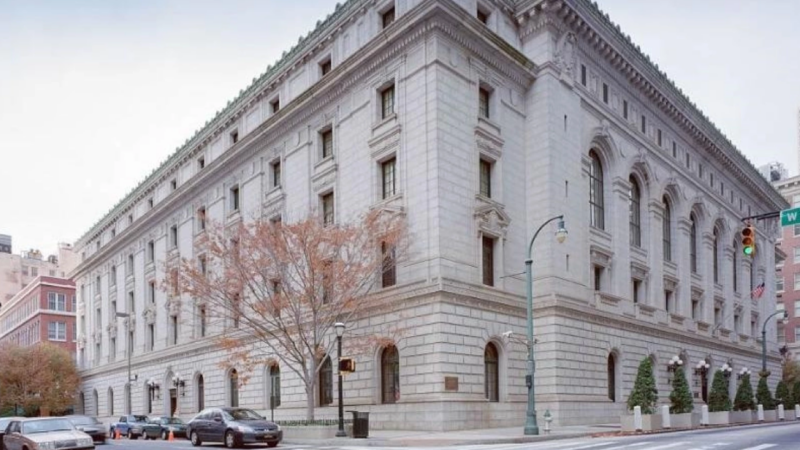
This Friday, April 26, the state of Florida will celebrate Confederate Memorial Day, one of three official Confederate anniversaries that linger in state law, relics of Jim Crow.
I am not opposed to memorializing people who died in war. Do that any day of the year. Or do it on the nation’s official Memorial Day. News flash: The Confederate States of America lost the Civil War, thankfully, and slavery with it. We have one nation. To quote the Pledge of Allegiance, we’re “one country, indivisible.”
Chapter 683 of Florida Statutes lists 21 legal holidays in Florida, including Confederate Memorial Day, a Jim Crow institution. It was not added in Florida immediately after the Civil War but was enacted by the Florida Legislature in 1895 along with Robert E. Lee’s birthday. Ten years later, the birthday of Jefferson Davis was added as an official state holiday in Florida.
To add another relic of Jim Crow, Florida Statutes make it a crime to mutilate or disrespect Confederate flags. According to Statute 256.051, it is unlawful to “mutilate, deface, defile or contemptuously abuse the flag or emblem of Florida or the flag of emblem of the Confederate States by any act whatever.” I wonder if mutilation as a political statement is protected under the First Amendment? In Texas v. Johnson (1989), the U.S. Supreme Court decided that burning the American flag was protected if it is symbolic speech.
So what was happening around 1895? With the loss of Reconstruction around 1877, former Confederate states sought to restore an economic system that fell just short of slavery. Votes were suppressed, broad vagrancy laws sent African Americans into prison work gangs, the Ku Klux Klan and other white supremacist groups operated with impunity, Black people were lynched to create terror, schools and public places were segregated by race, the myth of the Lost Cause was forced into textbooks and monuments to Confederate heroes were built throughout Florida.
In Downtown Jacksonville, a monument to the Confederacy was erected in 1898 in St. James Park, then renamed for a Confederate, Charles Hemming, who arranged for the monument. Finally in 2020, the park was renamed for local author, educator, songwriter, statesman and Civil Rights leader James Weldon Johnson after the Confederate statue was removed.
The Lost Cause fiction was created just after the Civil War with the 1866 book written by Edward Pollard, “The Lost Cause: A New Southern History of the War of the Confederates.”
The most famous part of the myth was that the South did not secede over slavery, thus ignoring the actual statements in the Articles of Secession by the Confederate states as well as the 1861 “Cornerstone Speech” by Confederate Vice President Alexander Stephens.
As for states’ rights, the imagined cause of the war, the real problem was the refusal of many Northern states to comply with the Fugitive Slave Act of 1850. Instead, many Northern states and cities passed personal liberty laws that basically nullified the federal law. It was states’ rights in the North — and the issue of slavery — that was the problem. The Articles of Secession make that clear.
The Lost Cause myth was enforced by relentless political pressure of Confederate apologists. One outrage occurred on April 1, 1911, when the governing board of the University of Florida, meeting in Jacksonville, ordered the university’s president to accept the resignation of Enoch Marvin Banks, the chair of the UF History and Economics Department.
What was his offense? He wrote a column in which he stated that slavery was “an anachronism,” that a confederacy with a right of secession was not the best form of government, that in the Civil War the North was relatively right and the South was relatively wrong, that President Abraham Lincoln was in harmony with the age and that Confederate President Jefferson Davis was “distinctly inferior” because his cause ran counter to progress.
The year 1911 was 50 years after the Civil War. The Lost Cause mythology was ingratiating itself into American popular culture. The Klansman: A Historical Romance of the Ku Klux Klan by Thomas Dixon, was published in 1905 and became the source of the silent movie hit Birth of a Nation by D.W. Griffith in 1915.
The purveyors of this romanticized myth imagined that Confederate leaders were like knights of old and that an upper class, served by enslaved people, was a superior form of civilization. The Lost Cause also portrayed the Ku Klux Klan as valiant warriors, not as the terrorists they really were.
Meanwhile, Confederate apologists were successfully rewriting textbooks to introduce their fictional version of history in the minds of young Southerners and to ban any mention of the real history.
All of this was happening in 1911 when the column by Banks in The (New York) Independent produced a firestorm of outrage in Florida. Protests were made by the United Daughters of the Confederacy and other Confederate sympathizers, including some influential politicians. Newspaper editorials, including in The Florida Times-Union, joined the criticism. The Times-Union wrote that secession was constitutionally valid and that by supporting Lincoln, Banks was teaching a generation to “grow anarchists.”
An influential former legislator, John S. Beard, began a letter-writing campaign to newspapers such as The Tampa Tribune. Beard protested that Banks was insulting every Confederate or child of a veteran, and questioned the retention of someone promulgating such a “mental and moral virus.”
In Jacksonville, the R.E. Lee Camp of the United Confederate Veterans complained that Banks was implanting in youth that their fathers “were either fools, knaves or traitors.”
Banks wrote that a new generation in the South “was becoming more tolerant of free discussion of its past and policies” along with the expansion of Southern industry and universities. He assumed that he was participating in an institution in which intellectual integrity and freedom were supported. Banks was so eager to please that he supported the elimination of African American voters. With an all-white voting base, he figured, the South could truly join the North — and only the interpretation of the Civil War stood in the way of true reconciliation.
Banks was born in 1877 in Newnan, Georgia. He received bachelor’s and master’s degrees from what was then Emory College (now Emory University) and his doctorate from Columbia University and spent a year in Germany doing post-doctorate work. In 1907, he was appointed as a professor of history and economics at Emory. His mentor at Emory, Andrew Sledd, became president of the University of Florida and in 1907, he appointed Banks chair of the History and Economics Department there.
Sledd, who left the University of Florida before the Banks controversy, wrote in The (New York) Independent that University of Florida officials were in a dilemma. Would the school maintain its academic independence but risk losing appropriations from the Legislature? With the Banks resignation, Sledd concluded that “The University of Florida has suffered a humiliating defeat on a great moral issue.”
The controversy was put into context by The New York Age, an African American weekly newspaper in New York City. In an editorial in 1911, it stated the fact that “the best government the South ever had, the only true one it has known, was during the days of Reconstruction, out of which came a fair ballot, the public school system and the legislation that killed the ‘Black laws.’”
And The Independent published several columns in support of Banks, as did his hometown newspaper, The Atlanta Constitution, which called the protest “a mental gag law.” If Banks was wrong, the newspaper editorialized, then the issue should be debated openly, not suppressed.
Banks responded to the supportive Atlanta editorial with a letter to the editor in which he wrote that the University of Florida president wanted to stand for academic freedom but that the criticism was too strong.
So Banks’ resignation was accepted and suppression did happen. The incident was lost to history until 1992, thanks to an excellent, detailed piece by Fred Arthur Bailey in The Florida Historical Quarterly, the basis for many of the details in this column. In 2022, University of Florida history students of Professor Steve Noll were so impressed by the story that they suggested naming the conference room of the History Department for Banks.
The faculty considered the suggestion, Noll said in an interview. In a rare instance, the students were allowed to address the faculty. There was some trepidation by the faculty, in part due to the support of Banks in suppressing African American votes. In the end, the suggestion was approved. Today, a photo of Banks is displayed in the conference room that bears his name.
As for Banks, he died in Newnan, Georgia, on Nov. 21, 1911, about one week from his 34th birthday and about six months after he was released from the University of Florida. Obituaries referred to his death as resulting from an “unspecified illness.” Banks, unmarried, was survived by his mother and several brothers and sisters.
The loss of his career, and perhaps his life, were tragedies spawned by the Lost Cause myth of history, which became a justification for segregation in public places, for unequal education, for discrimination in the justice system, for denying mortgages in many neighborhoods through the nation, for opposing a federal anti-lynching law (which finally passed in 2022) and for providing a template for the misinformation that survives in many areas of modern life.
Though the Lost Cause is no longer accepted by mainstream historians, it retains a grip on much of American life, including the three official Confederate holidays in the state of Florida.

Mike Clark devoted about 47 years to Jacksonville's two daily newspapers. He retired in 2020 after 15 years as editorial page editor at The Florida Times-Union, where he and his staff won local, state, regional and national journalism awards.
He is the author of the new book, “Civil War Survivor: Incredible True Story of a Union Private.”





